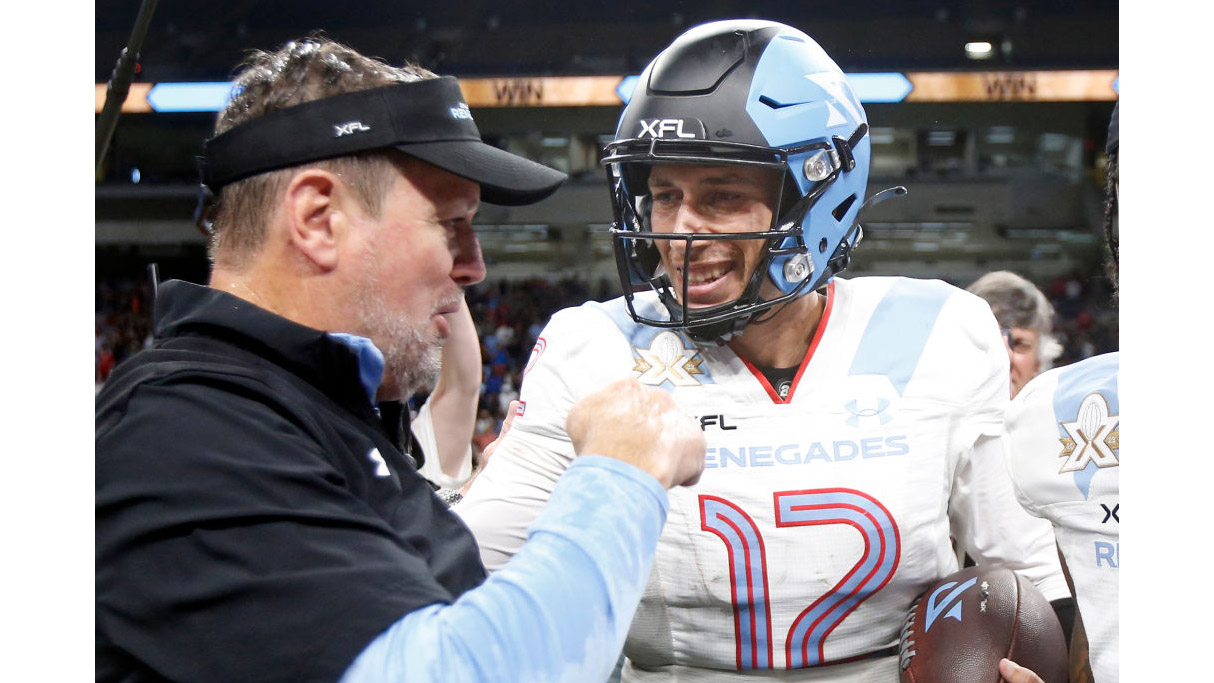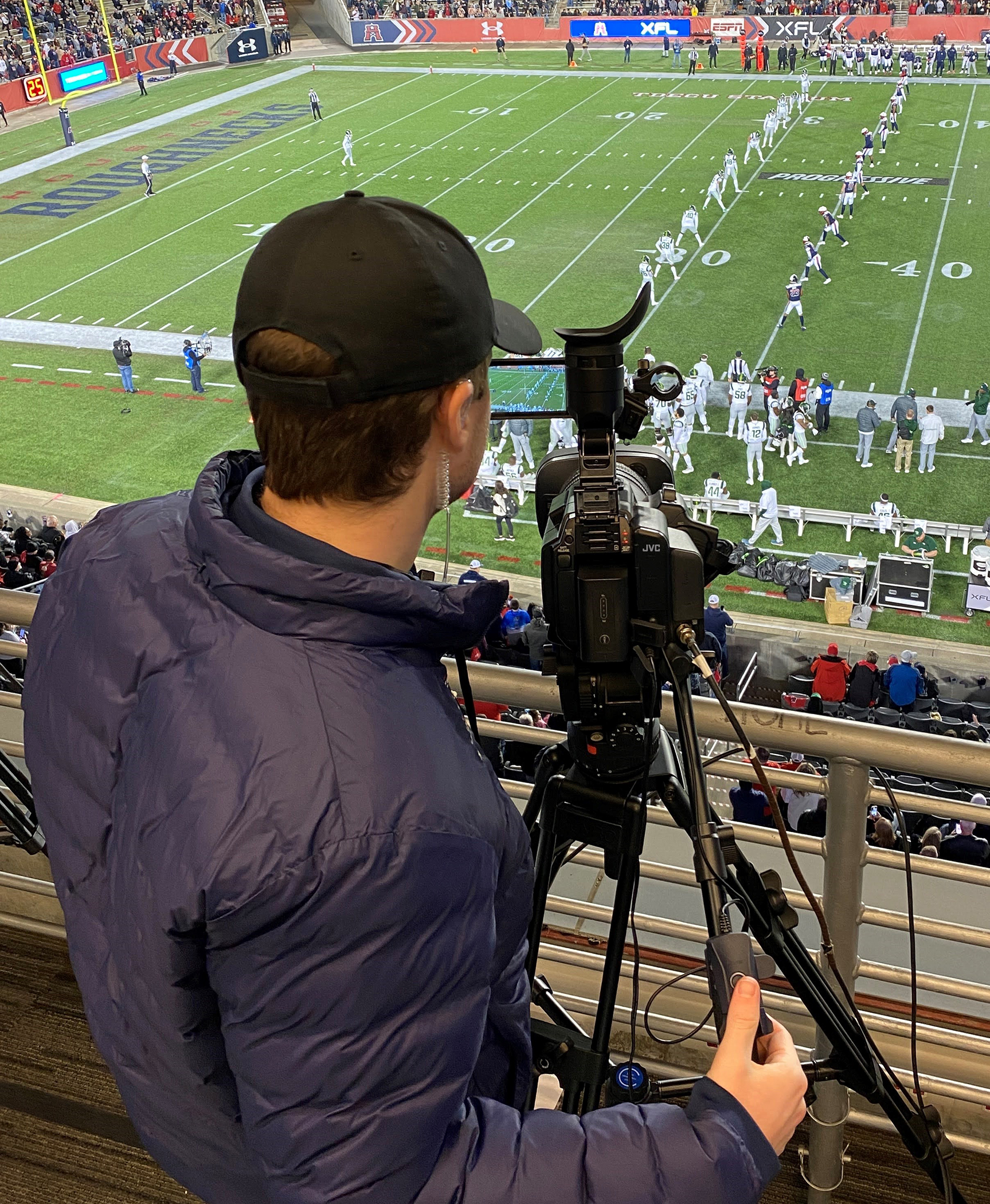The XFL Enhances the Coaching Experience with JVC Production Cameras
CONNECTED CAM integrates with Catapult Analytics System to allow for streamlined video management and data collection.

Brad Campbell spent two decades in the NFL as a video director that embraced innovative solutions to enhance the overall fan experience. Now senior director of football technology for the XFL—the spring football league which is partially owned and operated by Dwayne "The Rock" Johnson—Campbell has seamlessly integrated JVC’s GY-HC500SPCU CONNECTED CAM Handheld Sports Production Cameras with the league’s Catapult analytics system for streamlined video management and efficient data transfer for the eight video managers―one for each team.
“The JVC GY-HC500SPCU cameras blow others out of the water; they have delivered fantastic results for us,” said Campbell. “The ease of use, fast operation, and compatibility of the cameras with our existing systems have significantly enhanced our video operations. We were one of the first organizations to adopt the 500-Series cameras, and we were sold on them right from the start. They are perfect for a start-up league―the price point is fantastic and the quality really matches everything that I have used in professional broadcasting.”
With two cameras being deployed for each team, the league’s video managers are tasked with collecting player data, player footage, and cut-ups of the players in action. This content then gets shared with the league’s directors of player personnel, who use it for a variety of playback scenarios. “With the JVC GY-HC500SPCU, we’re able to capture crucial game footage, offer dynamic replay angles and even provide supplementary coverage to our broadcast partners,” continued Campbell. “All the teams run out of a hub in Arlington, TX until game day, which allows us to share equipment easily, so it’s nice to have every team utilizing the same camera.”

Campbell also notes that the XFL gives his team creative control over the techniques they can use on the field. “Our league’s agility allows us to experiment with technology and push the boundaries of what’s possible,” he said. “We do things a little differently on game day in that we share services, so we don’t have two video managers (one for each team) shooting the same thing. Instead, our teams share their content, which makes it a lot more efficient for our video team who work on a tight staffing schedule.”
For Campbell, one of the standout features of the video production system is the camcorder’s unique metadata tagging capability. “It aligns seamlessly with the XFL’s data-driven approach,” he added. “We have a much smaller staff than other professional leagues, so we need a way to integrate and access the footage quickly. The GY-HC500SPCU cameras in combination with the Catapult coaching software system allow us to have efficient categorization and retrieval of critical footage for player scouting and performance analysis. It’s really key for us to be able to work that fast.”
[Here's Why a College Athletics Conference Turns to JVC for Broadcast Applications]
The integration between the JVC GY-HC500SPCU and the Catapult XOS gives users the ability to incorporate the popular exchange mode, which allows for shooting in 720p 60 8MB with subsequent exporting to an exchange file format. According to Campbell, the Clip Continuous mode makes it possible for drills and multiple plays to be combined into one file, increasing import speeds. Additionally, the ODK (Offense/Defense/Kicks) metadata tagging allows users to mark the phases and camera angles of the game or practice, which can be linked to the associated clips for faster and more accurate editing. Finally, the Dual Record Card Slots “allow us to keep a main card and to have the peace of mind that a backup is being made without the need for an external recording device,” added Campbell.
A daily selection of features, industry news, and analysis for AV/IT professionals. Sign up below.
In addition to the sports coaching and analytics applications, Campbell says the cameras are also used for the league’s replay system, which feeds to HQ in Los Angeles. This includes footage from the sidelines and end zones, as well as play-by-play coverage. Campbell also uses the JVC cameras to provide content to ESPN, the league’s broadcast partner. “We’re feeding all those angles in, and they run through the truck,” he said. “ESPN uses a lot of our shots and I think the footage looks really good on broadcast. I’m not even sure you can tell the difference between our content and the shots from ESPN’s large broadcast cameras.”
[AV Network's top stories, product news, and expert insights]
Campbell and his team are also enthusiastic about exploring further technological advancements with JVC. “We’re not even scratching the surface on what these cameras can do from a connectivity standpoint,” said Campbell. “As we look to expand, we plan to really explore the capabilities of the cameras and focus on all the features we have yet to try, like on-site file transferring. All those things that are pain points for video managers and directors across college and professional sports; that’s the kind of stuff we’re looking to get a jump on. We’re excited to harness the full potential of the JVC cameras and other innovations to continue delivering exciting football action to our fans.”
The AVNetwork staff are storytellers focused on the professional audiovisual and technology industry. Their mission is to keep readers up-to-date on the latest AV/IT industry and product news, emerging trends, and inspiring installations.

